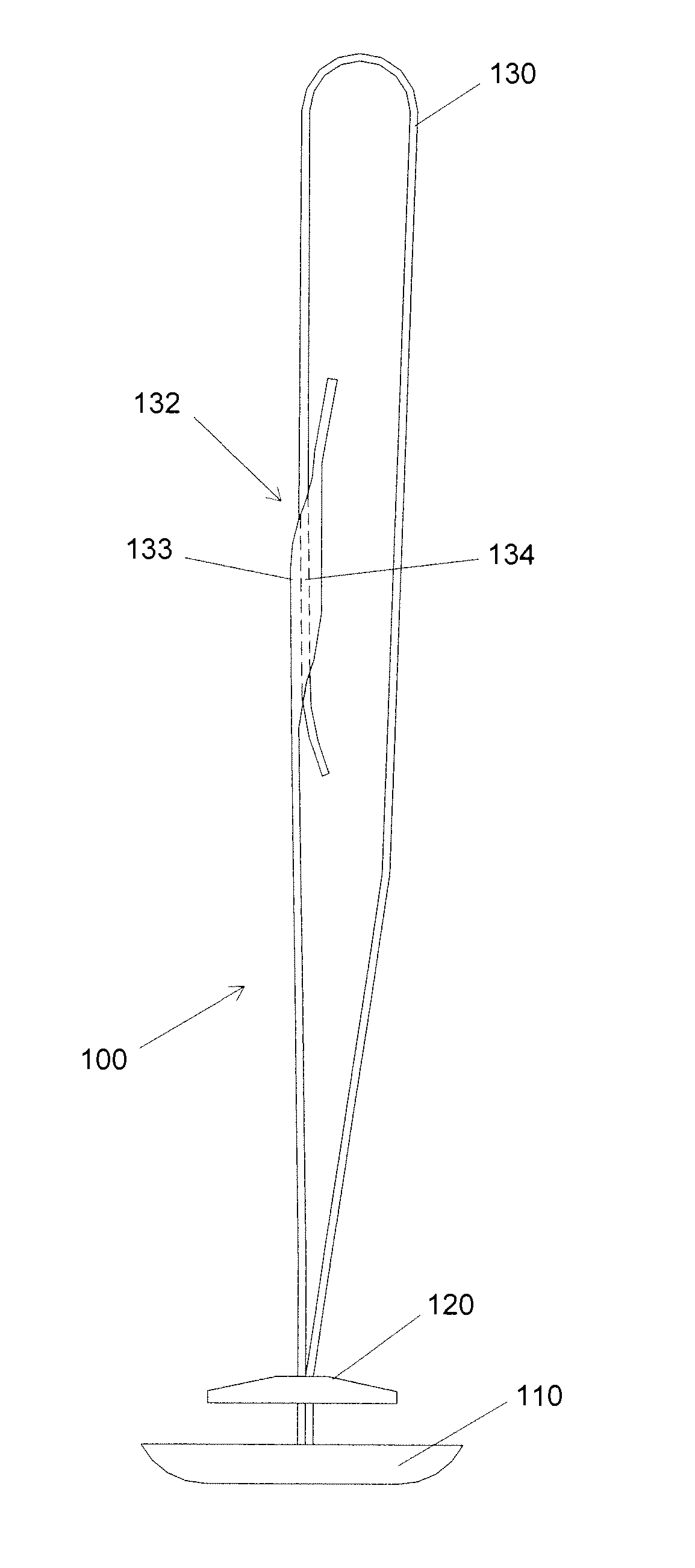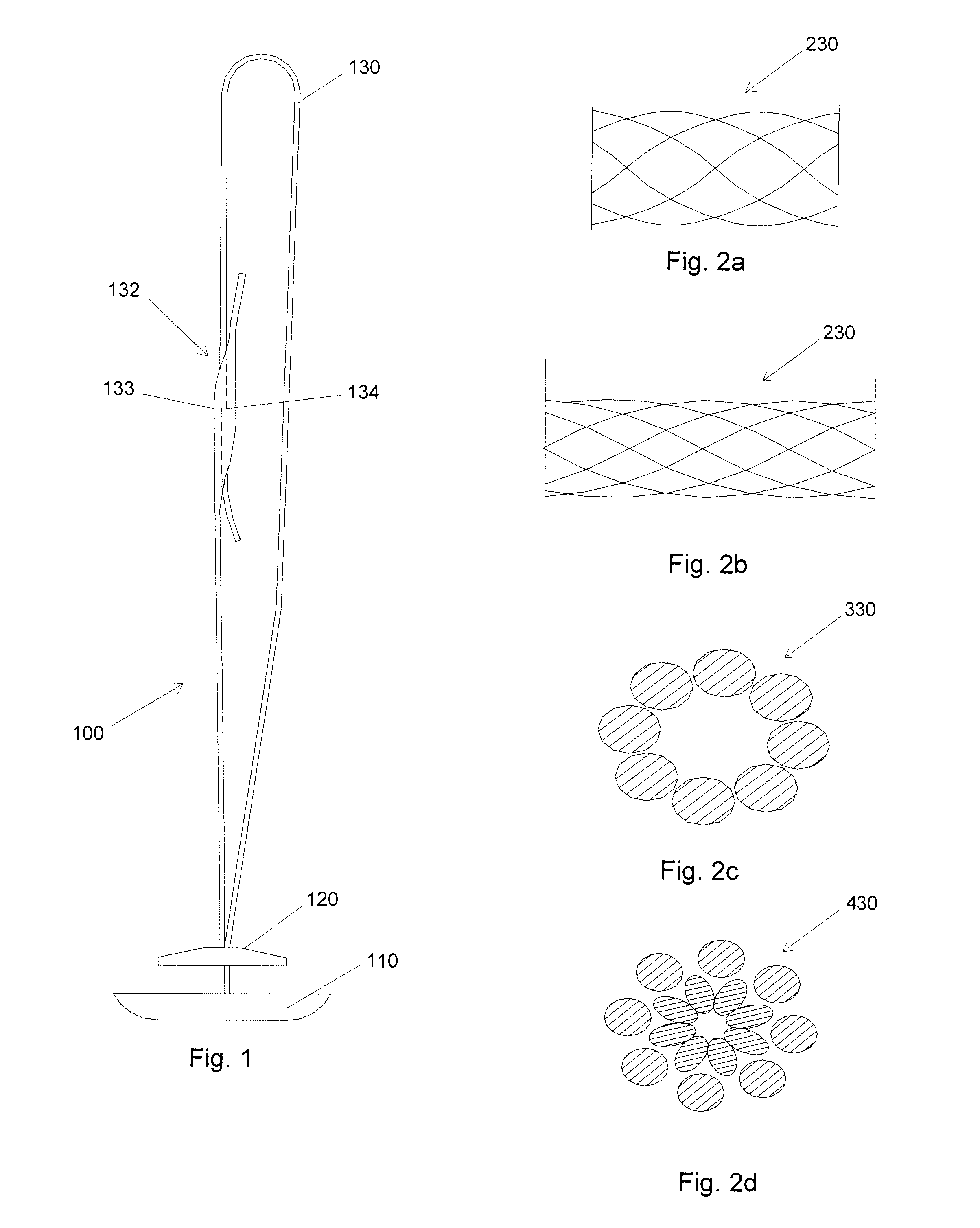Technique for securing a suture
a technology for sutures and securing screws, which is applied in the field of medical procedures, can solve the problems of reducing the strength of the suture, complicated overall design, and complicated manufacturing process of glue used in the manufacturing process, and achieves the effect of increasing the tension of the suture and increasing the holding power
- Summary
- Abstract
- Description
- Claims
- Application Information
AI Technical Summary
Benefits of technology
Problems solved by technology
Method used
Image
Examples
Embodiment Construction
[0017]FIG. 1 illustrates a first preferred embodiment 100. As shown in FIG. 1, first preferred embodiment 100 includes an inner seal 110, an outer locking element 120, and a suture 130. The suture 130 has a portion 132 wherein a first portion 134 of the suture is embedded in a second portion 133 of the suture, as shown in FIG. 1. In this manner, as tension in the suture increases, the portions 133 and 134 are held together due to portion 133 contracting (in cross section) and exerting friction on portion 134.
[0018]FIGS. 2a to 2d illustrate some examples of sutures which may be employed in the present invention. FIG. 2a shows a suture 230 in a relaxed state and FIG. 2b shows the same suture 230 in a state of tension. FIG. 2c illustrates a suture 330 having a single layer of filaments and FIG. 2d shows a suture 430 having two layers of filaments. Other suture designs may be used in the invention.
[0019]FIG. 3 illustrates a second embodiment 500. The second embodiment includes an inne...
PUM
 Login to View More
Login to View More Abstract
Description
Claims
Application Information
 Login to View More
Login to View More - Generate Ideas
- Intellectual Property
- Life Sciences
- Materials
- Tech Scout
- Unparalleled Data Quality
- Higher Quality Content
- 60% Fewer Hallucinations
Browse by: Latest US Patents, China's latest patents, Technical Efficacy Thesaurus, Application Domain, Technology Topic, Popular Technical Reports.
© 2025 PatSnap. All rights reserved.Legal|Privacy policy|Modern Slavery Act Transparency Statement|Sitemap|About US| Contact US: help@patsnap.com



